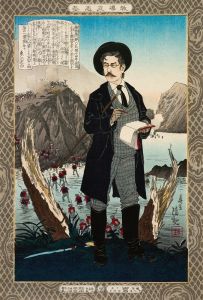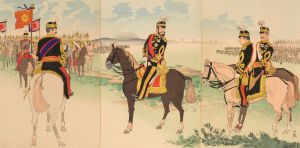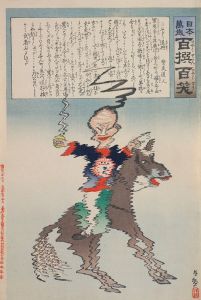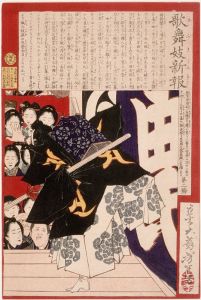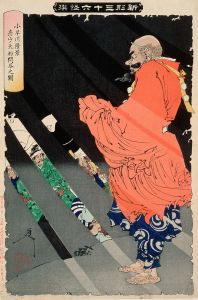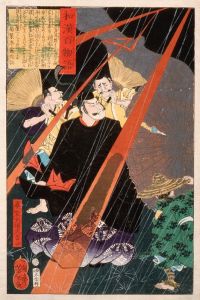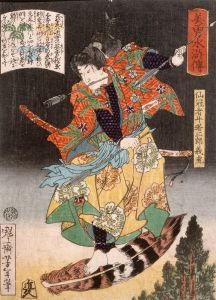
A Picture of the News from Kagoshima
A hand-painted replica of Tsukioka Yoshitoshi’s masterpiece A Picture of the News from Kagoshima, meticulously crafted by professional artists to capture the true essence of the original. Each piece is created with museum-quality canvas and rare mineral pigments, carefully painted by experienced artists with delicate brushstrokes and rich, layered colors to perfectly recreate the texture of the original artwork. Unlike machine-printed reproductions, this hand-painted version brings the painting to life, infused with the artist’s emotions and skill in every stroke. Whether for personal collection or home decoration, it instantly elevates the artistic atmosphere of any space.
Tsukioka Yoshitoshi, a prominent Japanese artist of the late Edo and early Meiji periods, is renowned for his innovative and dynamic woodblock prints. One of his notable works is "A Picture of the News from Kagoshima," which reflects his unique style and the historical context of the time. Yoshitoshi was born in 1839 and became a leading figure in the ukiyo-e genre, known for his dramatic and often violent imagery, as well as his ability to capture the complexities of human emotion.
"A Picture of the News from Kagoshima" is part of Yoshitoshi's broader body of work that often depicted contemporary events and historical narratives. This particular piece is significant as it captures a moment from the Satsuma Rebellion, a major revolt in 1877 led by disaffected samurai against the newly established Meiji government. The rebellion was centered in Kagoshima, the home of the influential Satsuma Domain, and was led by Saigō Takamori, a former samurai who became a symbol of resistance against the rapid modernization and Westernization of Japan.
Yoshitoshi's work during this period often reflected the social and political upheavals of the Meiji Restoration, a time when Japan was transitioning from a feudal society to a modern state. His prints served not only as artistic expressions but also as visual documentation of the era's significant events. "A Picture of the News from Kagoshima" exemplifies this dual role, providing insight into the public's perception of the rebellion and the broader societal changes occurring at the time.
The print likely portrays scenes of battle or key figures involved in the Satsuma Rebellion, capturing the tension and drama of the conflict. Yoshitoshi's style is characterized by bold compositions, vivid colors, and intricate details, which would have been employed to convey the intensity of the events depicted. His ability to blend traditional Japanese artistic techniques with new influences from the West is evident in his work, making it both a product of its time and a timeless piece of art.
Yoshitoshi's contributions to the art world extend beyond his depiction of historical events. He is credited with revitalizing the ukiyo-e genre during a period of decline and is often regarded as one of the last great masters of this traditional Japanese art form. His influence can be seen in the works of subsequent artists and in the continued appreciation of ukiyo-e both in Japan and internationally.
In summary, "A Picture of the News from Kagoshima" by Tsukioka Yoshitoshi is a significant work that captures a pivotal moment in Japanese history. Through his masterful use of the woodblock print medium, Yoshitoshi not only documented the events of the Satsuma Rebellion but also contributed to the enduring legacy of ukiyo-e art. His work remains a valuable resource for understanding the cultural and historical context of 19th-century Japan.





